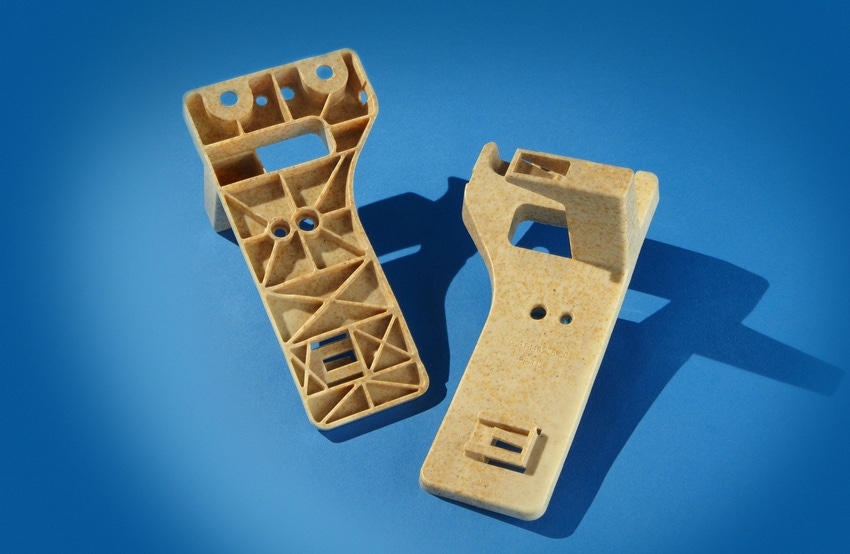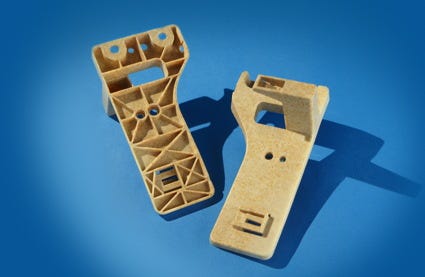The 2014 Ford F-150 pickup truck is lighter than ever, with extensive use of high-strength 70,000-psi steel and aluminum, but plastic is also playing a key role in the environmental credentials of the full-size truck, which may return fuel economy as high as 30 mpg. The electrical cowl bracket employed in the vehicle is molded from a rice hull-filled grade of polypropylene (PP). The development was initially reported by PlasticsToday here.
April 14, 2014

The 2014 Ford F-150 pickup truck is lighter than ever, with extensive use of high-strength 70,000-psi steel and aluminum, but plastic is also playing a key role in the environmental credentials of the full-size truck, which may return fuel economy as high as 30 mpg. The electrical cowl bracket employed in the vehicle is molded from a rice hull-filled grade of polypropylene (PP). The development was initially reported by PlasticsToday here.
|
Electrical cowl brackets get rice treatment. |
The grade: Rhe Vision RH10P325-00 PP; is supplied by Rhe Tech (Whitmore Lake, MI), a compounder offering filled and reinforced polypropylenes, engineered resins, and color concentrates. The part was processed by A. Raymond Tinnerman (Brunswick, OH), who also supplied the tooling, in a direct drop-in process. The system supplier is Yazaki North America (Canton, MI).
The development team worked together to optimize the material for recycled and renewable content. The rice hull loading in the grade is 10%, replacing a 10% talc filler, while the polypropylene itself contains 25% post-consumer recyclate (PCR). Rice hulls were chosen because they are readily available and consistent in composition, rice boasts a fast growing cycle, and rice hulls normally goes to land fill.
The application is cost neutral on a pound per pound basis. No cost is associated with producing the rice hulls as they are a by-product of food processing. Therefore, the cost and energy associated with mining and refining a mineral filler are eliminated. Further, using the rice hulls as fillers avoids land fill costs of this by-product.
You May Also Like



